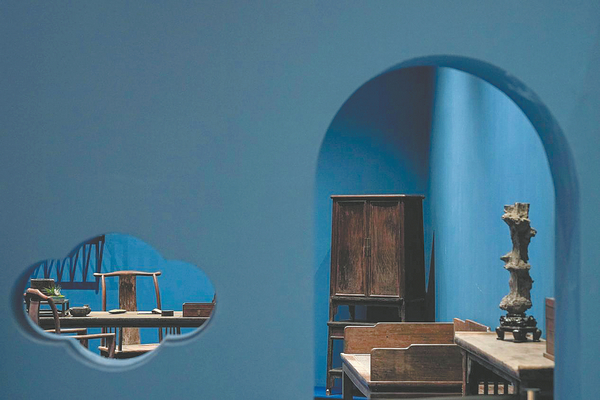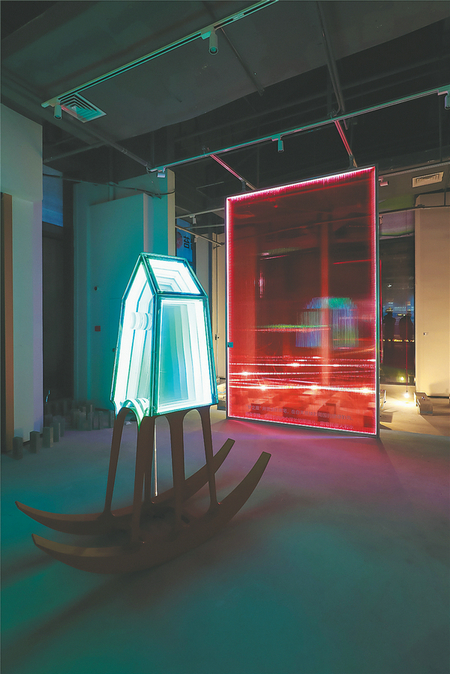

Original strokes
Painting a New Chapter, a long-term exhibition that recently opened at the National Museum of China, brings together the work of 15 painters. On display are the three main genres of Chinese ink painting — flower-and-bird, mountain-and-water, and figurative — which have been painted for centuries, but which have also integrated techniques from foreign art.
The exhibition explores recent developments in the classic genre, as well as innovative efforts to promote it on the international stage. Featured painters include Niu Kecheng, who is also a senior researcher at the Chinese National Academy of Arts. Niu is known for his creative use of color, especially purple, which he uses to give to his landscapes a sense of expansiveness and a mystical feeling. Yuan Wu, a resident painter at the Beijing Fine Art Academy, focuses on figurative art. His painting depicts Qi Baishi observing a clutch of chickens, a recurring motif the late modern ink master revisited on numerous occasions, and hints at Qi's humble, rural background and lifelong pursuit of simplicity in art.
9 am-5 pm, closed on Mondays. 16 East Chang'an Avenue, Dongcheng district, Beijing. 010-6511-6400.

Dream of Jiangnan
Ancient China's wenfang, or scholar's study, was not just a place intellectuals read, wrote, painted or participated in other cultural activities, it was also a haven for enjoying solitude, where they could quiet inner worries, cultivate their minds and rise to a higher spiritual realm.
The Jiangnan Literati Space Exhibition at the Yunjian Arts Center in Shanghai, which runs until March 31, attempts to re-create the soothing wenfang atmosphere once enjoyed by the literati of Jiangnan, the region south of the lower reaches of the Yangtze River.
On show are objects of art and craft that have long been considered essential ornaments for scholars, including Chinese paintings and calligraphy. Also on display are ceramics, guqin (Chinese zither), incense burners, stands for unusually shaped rocks, furniture fashioned in the classical style and other creative items that accentuate grace and serenity. The three salons showcase the beauty of the cultured lives led by the ancient literati, and events held during the exhibition will allow visitors to sample tea, try to play the guqin, make calligraphy rubbings and learn about the types of incense popular in the past.
8:30 am-6:30 pm, closed on Mondays. 26 Renmin Nanlu, Songjiang district, Shanghai.

New life
As its name suggests, Cheer for a Ton of Light is an exhibition of contemporary art that explores the symbolic meanings of light in different contexts. Featured artists made full use of waste and recycled materials to create work that explores different presentations of light. The exhibits pay homage to the greatness of nature, industrial development and art and, at the same time, reflect on issues shadowed by rapid development, such as overconsumption, pollution and the deteriorating environment.
The show, which runs through April 28, is a collaboration between the One Ton Project and Qing Tai Id-Land in Suzhou, Jiangsu province. The former is a platform launched five years ago to open up dialogue between artists, designers, scholars and factory workers on environmental protection and the collective wisdom needed to achieve sustainability.
10 am-6 pm, closed on Mondays. Qing Tai Id-Land, 2689 Chunshenhu Xilu, Xiangcheng district, Suzhou, Jiangsu province.